*This article was published in the Assam Tea Planters Magazine for their annual meeting in August 2015
Standards defining tea quality
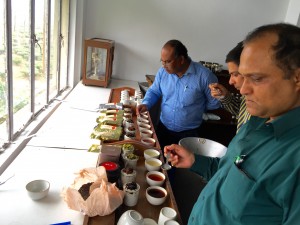
The International Specialty Tea Association was founded this year with the initial goal of publishing standards that define specialty tea. Standards establish a threshold of tea quality for the most skillfully made teas that give meaning to the label “specialty tea.” Once defined, the association will establish a process to objectively evaluate tea quality using these standards. The process can be learned and shared by producers and customers. The intent is to negate “false value” and chaos due to marketing solely to benefit tea merchants.
Assam is the tea-growing region that can best benefit from establishing quality standards. Known as the world’s largest tea producing region for its commodity tea, it may be hard to imagine that Assam is capable of making some of the best tea in the world. Instead of CTC prices that hover slightly above the cost of production, Assam growers are capable of fetching some of the highest prices per kilo in the world. I know this is possible. I have seen in done in the recent past.
China as a case study
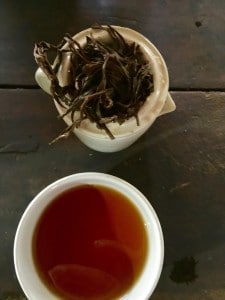
China is a useful model for comparison because Chinese tea production in the 1980s was similar to that of Assam today.
Marketing claims aside, China has not always been a maker of quality tea. The Chinese tea industry went through many destructive cycles, beginning with the first Opium War in the 1840s and continuing until the industry’s complete destruction during World War II. When WWII ended a Civil War followed. The tea industry was reimagined not with an emphasis on quality, but a focus on producing a large quantity of tea for the masses. Land was cleared and tea was planted according to a commodity model. This newly instituted style produced inferior tea. As result, Chinese tea (at least that which has reached the international market) is still stigmatized as inferior by many international merchants.
Things changed in the 1990s because of two significant changes to the Chinese system. The first was a policy that allowed private for-profit companies. The second (and most significant in establishing quality) was the adoption of standards for the tea industry. These changes encouraged producers to work toward a measurable goal – and a means to judge whether or not that goal was reached. Money rewarded quality — a reward that came hand-in-hand with the emergence of stronger middle class purchasing power in China.
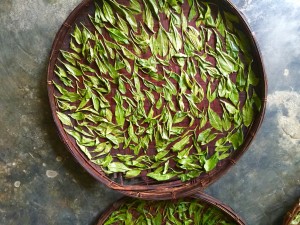
Today the average price for tea in China is 20 times greater than the average price in India. Perhaps even more important is that the average wage for a tea worker in China is 10 times greater than for Indian tea workers. It should be noted too that China is supporting five times as many workers. Growing and making tea is a labor-intensive process requiring considerably more workers to achieve quality results.
It doesn’t take a great deal of statistical imagination to recognize the potential benefit to the world market. Currently that market is estimated anywhere from $50-$90 billion per year and is composed primarily of commodity tea. It is not difficult to imagine quality tea taking only one percent of the market with an average price of $100 per kilo (currently the average price in China.) What if that 1% could be expanded to 10%? This is achievable. Imagine earnings from quality tea that one day eclipse that from commodity tea.
India can lead a revolution in the international market… beginning in Assam. Indian tea holds a special allure for tea drinkers. The price to quality ratio is unfairly skewed in favor of export teas but within India Darjeeling is only one of many delightful teas.
There have been few opportunities to compare India’s best with Chinese tea (which rarely exits China) but the most exquisite selections have only been available to the broader Chinese domestic market for only the last five or six years.
China’s is on the verge of dramatic change during the next five years because, for the first time in Chinese
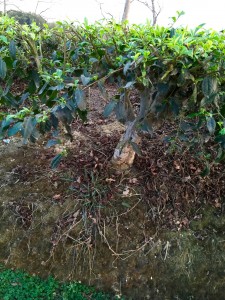
history, the Chinese government will start to actively promoting the export of quality Chinese tea internationally. Xi Jinping, China’s president has ordered Chinese economy to a return to the spirit of the Ancient Silk Road. In other words, China is intent on exporting its best products and moving towards quality product production. There will be a conference in October of this year in China to discuss how tea will fit in to this picture.
The Chinese are currently working hard to review and upgrade their standards. They are coordinating with the ISO in this regard for formal recognition. The head of the Chinese government department that sets standards for Chinese tea gave the International Specialty Tea Association its complete support in February of this year. I have also been asked to write a paper offering my opinions in my capacity as an advisor to the Chinese International Tea Culture Institute for the October conference. The conference will be held in Wenzhou — a symbolic city, the richest city in China’s richest province.
The promise of Assam
So let me bring this discussion back to Assam. I don’t need to restate the problems that Assam currently faces, as they are all very familiar to the reader. Let me talk instead about what I think makes Assam an untapped tea chest of treasure.
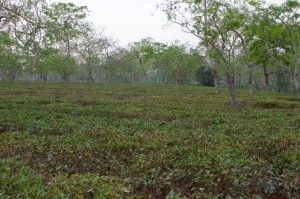
The first asset is the incredible skill applied to tea garden management, evident within the first five minutes of stepping onto Raj Barooah’s tea estate. What I saw were acres and acres of perfectly pruned bushes, many of them ancient. In my many years in the best gardens of China, I’ve never seen a garden cared for as well and with such effort applied to the growing of tea.
Secondly, Assamese cultivars are the richest cultivars in the world with a bounty of tea polyphenols, the ingredients in tea that are most potent in promoting health. This is a powerful advantage in penetrating the multi-trillion dollar wellness market.
Third, because of the richness of tea polyphenols, Assam tea has the most robust taste of any tea in the world. It is more than fantasy to imagine that a very rich black tea can be produced with out bitterness using different tea making techniques. Currently tea is being produced a several hundred miles directly to the east in Yunnan from similar bushes. I believe Assam would produce an even richer tea.
Fourth, the Assam has already established efficient logistics, an advantage over the Chinese.
And fifth, Assam is already a respected brand internationally. This is another advantage that the Chinese do not have. Chinese tea is still viewed with suspicion.
Of course, a change in the Assam industry would not be easy. Every aspect of the tea making process would be need to be revamped, from the care and harvesting of the bushes, to plucking the tea making process, and even the packaging and branding. The cost of production will be high and the risk in the beginning will be substantial. Skilled labor will also be difficult to recruit and train, but the promise of higher earning might have an effect. Planters like Raj Barooah and Rajen Baruah have already started to experiment with the production of specialty quality tea and have found customers. There are also small growers using makeshift equipment that have also found international buyers. I even ran across some very promising tea while visiting companies in Kolkata.
A strategy needs to be established as a guide to transitioning to universally accepted standards for quality that are currently being developed. The TRA can play an important role by investigating tea-making techniques based on Chinese tea-making. Dr. Devajit Borthakur did graduate work in China and Dr. Pradip Baruah has expressed to me a desire to study in China. There needs to be more educational exchanges with China. This will be one of the suggestions that I will incorporate into my paper for the conference there in October.
I think that a key element to opening the door to possibilities for Assam must be tied to reform of the existing auction system that is increasingly choking the resources of the Assam producers. Only in a colonial economy is this type of business model sustainable. The continued growth of the Indian economy, and the world economy for that matter, is inevitable. The places to find cheap labor are becoming fewer and fewer. The days when a handful of buyers can force the artificial price of tea down and reap colonizer profits as a result is going to come to an end.
This reform would certainly make the Assam economy more stable and free up some resources to make transition to more high-end production less of a risk. I believe some of the futures best teas have yet to me imagined and will come from Assam, and the rest of India as well.
You can be a part of, and follow the progress of the International Specialty Tea Association by signing up here. http://specialtyteaassociation.org
Austin Hodge
